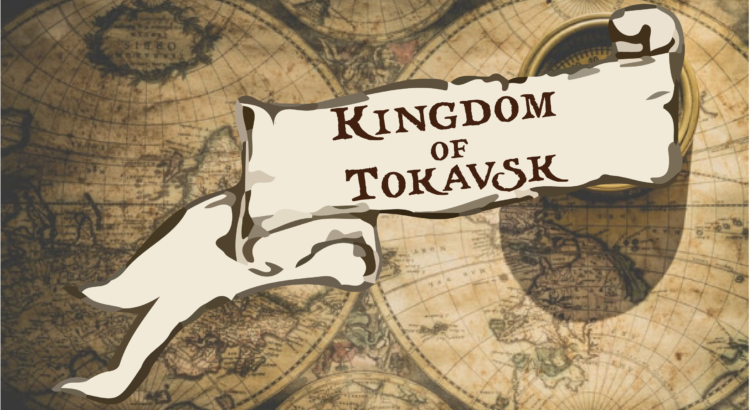The kingdom of Tokavsk is a midsized state located along the northern edge of the continent Helya. Situated between Strazhov to the west and Kurstukania to the east, Tokavsk is largely regarded as a buffer between the wild empires of the northeast and the stiff, elitist peoples of the northwest. Northern Helya’s ethnic groups are similar to one another, but the local belief that the west represents order and the east represents chaos has led to clear delineations among the population based on geographical location. As Tokavsk is roughly centered along the northern coast, it is regarded by its neighbors as the equilibrium of order and chaos.
Tokavsk’s origins have been reduced to legend, but a few suppositions can be made based on historical documents. First, Tokavsk was first mentioned in a census by the long-since fallen Bhrezhen Empire in 106 RA (Razan Age). It was described as “A region surrounding the trading outpost of Orod that the locals referred to as Tokavsk, or ‘Place of the Firs’” (The Sixth Census of the Divine Domain of Bhrezhen). Little else is said detailing the milieu of early Tokavsk. In 504 RA, 84 years after the Bhrezhen Empire’s collapse, a veken (wandering monk) wrote of “A strange principality situated betwixt the Fractured Lands [of Northeast Helya, a swath of warring factions which were slowly being absorbed into Kurstukania] and the realms of Strazhov and Norvatsk. Its people ascribe runes on their cloaks and bodies, on the surfaces of their huts made from skins, and on the ground. They understood the trees and how they breathed, something they claimed I as a foreigner would never understand.” Indeed, there is evidence of early Tokavskans having an affinity for rune magic; several sources document instances of Tokavskans healing each other and sick animals with one rune and summoning winds and driving snows with another. Many of these are thought to be tales conjured to make Tokavskans appear backwards and savage, and almost no one doubts that the magics described within are untrue or at least greatly exaggerated. The point of divergence—when Tokavskans became known as a distinct group within the Roskavan cultures—is unknown, but it seems to have occurred between the first and second surviving records describing Tokavsk. Certainly, the Tokavskan culture was defined long before it grew into a state. Subsequent records reveal interactions between members of the court of Strazhov and a man by the name of Berin Saskat, who is accredited with the founding of the Kingdom of Tokavsk. It was clear that at that point the Tokavskans, as they were called by foreigners (the Tokavskans then and still do refer to themselves as the Zheren, and henceforth that term shall be used out of respect for the Zheren people and to distinguish between the ethnicity and the state), were already a well-established minority within the Kurstukanian empire. They were poor trappers and hunters, regarded as primitive by the ethnic majority in Kurstukania, and had very little rights. They could not own land, vote, or marry an ethnic Kurstukanian. Conversely, the powers that be largely left the Zheren alone in what would become a grave blunder. This gave rise to a solidification in ethnic identity, which in turn inspired some radicals into revolution. The initial rebellion had little popular support, and indeed it went largely unnoticed even by the Kurstukanian military stationed out west. But the overthrow of a local nobleman sparked outrage in western Kurstukania, setting in motion a chain of violent events that would lead to the Tokavskan War of Independence in 1001 RA.



Leave a Reply
Be the First to Comment!